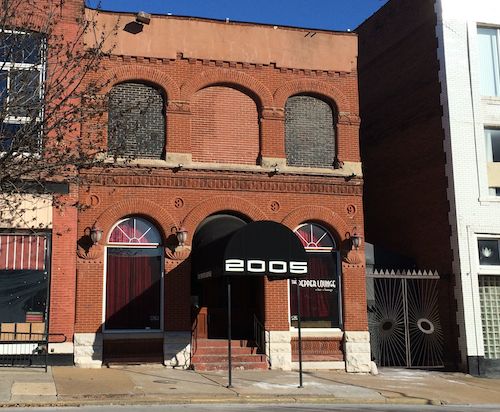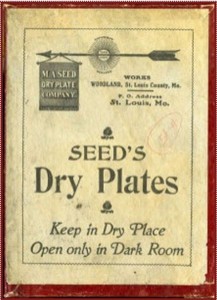2005 Locust Street: Photographic Inventor Miles Ainscough Seed Died A Century Ago
Just a few blocks west of my loft, a St. Louisan died 100 years ago. I enjoy these things because they send me on a chase looking for information and places to photograph.

Here’s what caught my attention back in February:
Manufacturer of the first x-ray plates Miles Ainscough Seed
Born February 24, 1843
Died December 14, 1913 [Note: Seed’s memorial on Find-A-Grave says he died ten days earlier, on December 4, 1013.]
Residence: The M.A. Seed Dry Plate Company worked from the building at 2005 Locust
Born in Preston, England, Miles Ainscough Seed came to St. Louis in 1865 to search out better scientific opportunities, and he began working in a photographic gallery. He worked in his spare time simplifying and the process for producing photographic negatives. He formed the M.A. Seed Dry Plate Company in St. Louis in 1882, and began to manufacture his new photographic dry plates and film. Among other innovations such a positive celluloid films and lantern slides, Seed produced the first dry plate sensitive enough to be used for x-rays and astronomical images. His company was extremely lucrative, and in 1902 he sold it to the Eastman Kodak Company of Rochester, New York. (STL250 on Facebook)
Ok, so maybe he died 100 years and 10 days ago. I did find some research on him but it uses Find-A-Grave as a reference on the date of death. I’ll need to look up the death certificate to know for sure.
 I did find information on the Miles A. Seed Carriage House, listed on the National Register of Historic Places around 1986:
I did find information on the Miles A. Seed Carriage House, listed on the National Register of Historic Places around 1986:
The carriage house dates to the ownership of the property by Miles A. Seed, who acquired it in 1887 and retained ownership until 1910. Born in England in 1842, Seed began a career as a portrait photographer in St. Louis after the Civil War. By the early 1870s he began manufacturing photographic supplies, and in 1883 he incorporated the Miles A. Seed Dry Plate Company specifically to be located in the village of Woodland. Woodland was a train stop that gave its name to a diffuse community later to become the City of Jennings. It was an attractive location for the fabrication of photographic plates because of its clean air and pure water. The success of Seed Dry Plate caused the whole community to prosper. In its field the company rivaled George Eastman of Rochester, New York, and by 1902 the threat of ruinous competition with him led Seed Dry Plate to sell out. In 1913 operations were moved to Rochester, but by then Miles Seed had moved on to new endeavors in Westchester County, New York. (PDF)
Sadly the Queen Anne carriage house was razed sometime between 1986 and 2002.
— Steve Patterson
Fascinating, Steve, thank you. I’ve been frequenting the collection in the Central Library’s “St. Louis Room” for a while now. It’s fascinating to learn about what was going on in my neighborhood, 50, 100, 150 years ago.
A nice bit of historical research, Steve. And I note he was originally from England, although further north than me. Plus, he appears to have been a successful businessman, while I’m a semi-retired scientist. (Scientists typically don’t get rich.)
You concluded: “Sadly the Queen Anne carriage house was razed sometime between 1986 and 2002.”
Well, that’s American-style progress for you. Either that or it’s burned down, sometimes a case of arson, etc.
Keep up the good work!